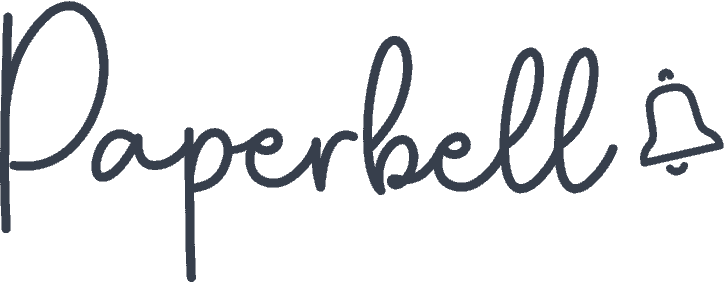Unlocking the full potential of your coaching clients takes more than just passion; it demands a structured approach. Coaching plans are the backbone of successful coaching relationships. They provide a clear roadmap for your coaching process and action steps for your client.
Let’s explore how you can create a step-by-step plan for your coaching process to maximize the results you deliver. You’ll also find a free coaching plan template in this article to fill in for each client when you start working together.
What is a Coaching Plan?
A coaching plan is a structured framework that outlines the goals and strategies of a coaching engagement. It serves as a roadmap for the coaching process with a clear direction for both the coach and the client.
It defines the client’s desired outcomes and breaks them down into key milestones to keep the sessions on track. Without it, your work with the client might float aimlessly, lack tangible results, and lead to missed opportunities.
If you coach with a plan, however, you can track and evaluate your client’s progress at every step and keep them accountable to take action. Working with clear benchmarks will help them take ownership of their personal growth and stay committed to the coaching process.
Your plan should be individual to each client and tailored to their aspirations and challenges. It should be clear enough to move the client’s progress in the desired direction but flexible enough to evolve as new insights emerge during the coaching relationship.
What to Include in a Coaching Plan
The most important part of an effective coaching plan is the client’s desired outcome when working with you. This should be clearly defined in your very first session with them and inform other elements of your coaching plan, such as:
- The goals that support that outcome
- The key milestones that will signal progress
- The action plan required to reach them
- A specific timeline
- The evaluation criteria for the client’s goals
The objectives you first define with your client might shift during your relationship. An “aha” moment might prompt them to refine their goals or head in a new direction.
For example, your client might come to you with a desire to build a million-dollar business. However, after digging deeper into their real motivations, they might discover that they want to feel seen and have a sense of purpose, which can be achieved in simpler ways.
[ Read: 12 Types Of Coaches and How They Win Clients In Their Niches ]
Even if you need to completely revise your coaching action plan at some point, its core elements stay the same. They should be built around the specific outcomes you and your client set for the coaching process and inform their next steps.
How to Write a Coaching Plan
Here’s how to write a plan that aligns your coaching process with the client’s goals and leads to meaningful results.
1. Establish Clear Goals
Begin by working with the client to clearly define their goals and desired outcomes for the coaching engagement. This is the time to dream; remove any mental limitations and encourage your client to expand their frame of mind.
For example, you can ask them:
- If everything was possible, what would you want to achieve?
- What would you do if time and money weren’t an issue for you?
- What did you always wish you could’ve done but never had the chance to?
It’s also worth exploring their core motivations to achieve these goals. A technique that helps do this is the five “whys.” By repeatedly asking your client why their objectives matter to them, you can get to the root of their desires and make sure they are aiming for what matters.
Once you know your client’s goals, you can refine them with the SMART goals framework. Make sure their objectives are:
- Specific: Clarify the fine details of the goal, for example, by answering who, what, where, when, and why.
- Measurable: Make sure there’s a way to determine when the goal is achieved.
- Achievable: Ensure the goal is realistic and attainable, given the resources available.
- Relevant: Align the goal with the client’s values, priorities, and ultimate vision.
- Time-bound: Make sure the goal can be completed within a set time frame (more about this later).
There might be a lot that comes up in this process. Identify the specific areas or topics the coachee wants to focus on now in line with their priorities. Guide them to define their goals more specifically and decide which growth areas are more important to tackle first.
2. Break Them Down
Big goals can feel overwhelming to act on. To make them more digestible, define some clear milestones for them. For example:
- Running research to gather new information.
- Acquiring new skills to be able to work towards the goal.
- Getting the resources necessary to move on.
- Seeking out people who can help with their knowledge, advice, or support.
- Carrying out a smaller version of the same project.
- Developing a smaller version of the final outcome into something bigger.
If your client wants to launch a new business, an actionable plan with key milestones for them could include:
- Identifying their target market and niche
- Registering their business
- Developing their first product
- Creating branding materials, such as a website and a professional biography
- Testing and refining their product with a focus group
- Launching marketing campaigns to build brand awareness and attract customers
- Monitoring their sales performance and developing new strategies
Always keep in mind your client’s unique preferences instead of handing them a ready-made plan. Provide guidance to them but make sure they articulate their own objectives for themselves. Their goals and key milestones should be something they can wholeheartedly commit to.
3. Establish the Timeline
Goals are only effective if they are tied to a specific timeline. While big goals and milestones can have a broader deadline (for example, buying a new property in 5-10 years), short-term and mid-term steps should be defined within a specific time frame.
Your coaching plan should ideally revolve around a key milestone. For example, you may agree with your client to work towards overcoming their stage fright in the next 3 months. This way, they know what overarching objectives they are working towards while committing to a specific coaching process with you on a key target.
Writing down the exact date for a goal in your client notes can be extremely motivating. For example, “I’ll make my first sale by 31st March.” With Paperbell, you can store all your client notes and information in one place and refer back to them any time you need to.
4. Define Accountability Measures
Outline and document the specific goals and milestones you’ll be working towards with the client. Based on this, you can define action steps at the end of each session with them to move closer to them.
If your client has certain responsibilities, for example, sending you a check-in every week, include that in your coaching plan too. For habits and action steps that need to be completed on a regular basis, you can set up a digital progress tracker where your coachee can check off the tasks that they have completed.
5. List Relevant Coaching Tools
Gather the exercises and tools that might help make your coaching process with the client more effective. These may be:
- Coaching questions
- Coaching models
- Exercises
- Assessments
- Additional resources
- Referrals to support groups or other professionals
This information is not for your shared notes with the client but for you only. If you feel they are hitting a roadblock or need more clarity on a particular area, you can always return to this customized toolkit to help them reach their next step.
Define and agree on the frequency of sessions with the client that would be most effective in helping them reach their goals. If you haven’t already, decide on the communication channels and the frequency of check-ins for your contract with them.
6. Review and Revise
Review your coaching plan regularly to ensure it still aligns with the client’s priorities, motivations, and values. Be open to their feedback and make any necessary revisions or adjustments based on their input.
Remember, your coaching plan should be flexible to evolve as the coaching relationship progresses and your client gains new insights. At the same time, it should serve as a basis for your sessions that you can refer back to and use to keep your client accountable.

Coaching Plan Template
Here’s a simple coaching plan template you can use with your clients.
Client Name:
Coaching Period:
1. Client overview:
Describe the client’s profile, previous experience with coaching, and the main reason they approached you.
2. Client goals and milestones:
Define the client’s overarching goals and key milestones.
GOAL 1:
Key Milestones:
GOAL 2:
Key Milestones:
GOAL 3:
Key Milestones:
3. Timeline:
Establish a timeline and schedule for the coaching engagement with specific deadlines.
5. Accountability Measures:
Define how progress will be tracked and evaluated throughout the coaching process, including regular check-ins, progress reviews, and assessments.
6. Coaching tools:
Identify the coaching tools and resources that might help make the coaching engagement more effective.
Coaching Plan FAQs
How Do You Structure a Coaching Package?
Clarifying your target audience’s goals and needs, then design a package with specific tools to meet them. Define a set number of sessions you’ll have with the client and their duration and frequency.
Define the client’s responsibilities, such as check-ins or completing a course chapter. Enlist the coaching tools and exercises you want to include in your coaching process.
As you can see, designing a coaching program or package is similar to writing a coaching plan. However, a package is designed for a particular target audience and defines the plan for the coaching process before the client is hired instead of customizing it for them.
What Makes a Good Coaching Session Plan?
A good coaching session plan starts with a clear agenda. It outlines the topics to be discussed in the session and its desired outcomes. Typically, coaching sessions may involve:
- Checking in on action steps the client committed to previously,
- Aligning on the focus of the session,
- Leading the client through specific coaching questions and frameworks,
- Summarizing the insights from the session, and
- Defining the next steps the client should take until the next session.
Make sure you adapt to your client’s needs and pace as you go along with your session, and allocate time for the most crucial topics.
What Are the 7 Steps of Coaching?
The seven steps of coaching are typically defined as:
- Building rapport with the client.
- Clarifying their goals and objectives.
- Exploring their current reality and challenges.
- Discussing strategies for overcoming obstacles.
- Exploring any patterns or limiting beliefs.
- Developing action plans to move forward.
- Providing accountability and feedback to help the client stay on track.
These steps aren’t set in stone; they are simply the most common elements you may apply to make your coaching effective.
Build a Thriving Coaching Practice
A coaching plan helps maximize the results of the coaching engagement. Creating lasting change in your clients’ lives will ultimately make you successful in the field—but only if your business doesn’t distract you from it.
To streamline the admin side of your coaching business, we recommend Paperbell.
It’s an all-in-one client management tool specifically designed for coaches by coaches. It handles your contracts, schedule, payments, landing pages, and more.
Try Paperbell for free with your first client.









